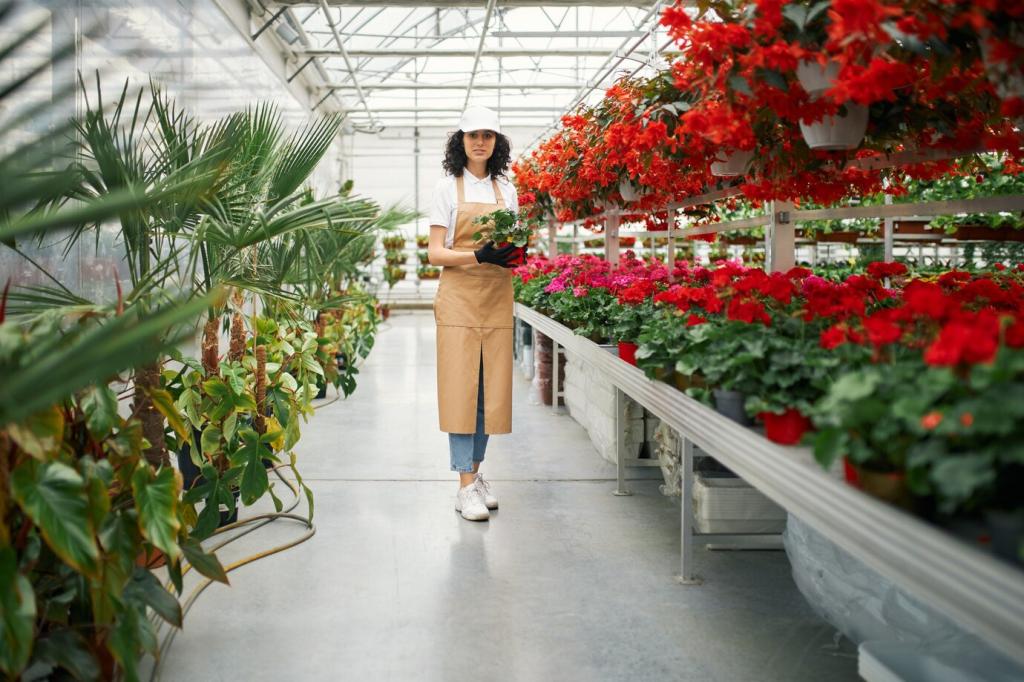
Container Gardening for City Dwellers
Container gardening offers an accessible and flexible way for urban residents to create their own green space, no matter how limited their square footage may be. In bustling city environments where yards and plots are often scarce, the art of planting in pots, troughs, and unconventional vessels lets individuals bring life and color to balconies, rooftops, window sills, and patios. This approach not only enhances the beauty and ambiance of an urban space, but also invites opportunities for relaxation, personal expression, and even small-scale food production. Discover the practicalities, joys, and innovative possibilities of container gardening within the city, and transform your urban dwelling into a lively, thriving haven.
Choosing the Right Containers
01
The choice of container material can significantly impact both plant health and the overall appearance of your space. Containers come in a range of materials including clay, ceramic, metal, plastic, and even repurposed items such as crates or buckets. Each option has its pros and cons—some retain moisture better, while others may insulate roots or provide lightweight flexibility for moving plants around. Urban environments often mean exposure to intense sun, wind, or heat, all of which can affect plant wellbeing differently depending on the container material. Consider not only aesthetics, but also durability, weight, insulation properties, and how much maintenance is required to keep the containers looking their best.
02
Containers must provide enough space for roots to grow and must enable excess water to escape—a crucial factor in the confined settings of city balconies or rooftops. Choosing appropriately sized containers prevents roots from becoming restricted, which can lead to poor plant health or even death. Adequate drainage holes at the base of the pots are essential to avoid waterlogged soil and root rot, especially in rainy climates or when frequent watering is necessary. The balance between retaining enough moisture and preventing excess water buildup is particularly important for city dwellers who may not always be on hand to check the soil daily.
03
City gardens are often extensions of interior living spaces, so the style of your containers is not merely a practical decision but also a reflection of personal taste. Modern, sleek pots may complement contemporary apartments, while rustic wooden planters or colorful ceramic urns add character to traditional terraces. Yet, the choice should not sacrifice practical needs such as mobility, ease of cleaning, and adaptability to available light. Striking the right harmony between form and function ensures your urban retreat remains both visually appealing and easy to maintain.
Light and Space Requirements
Understanding your urban garden’s light conditions is key, as buildings can create highly variable patterns of sun and shade. South-facing balconies might bask in sunlight all day, supporting sun-loving herbs, vegetables, or flowers. By contrast, shaded window sills or shadowed corners require shade-tolerant varieties such as ferns or certain flowering annuals. Additionally, space limitations mean choosing compact, upright, or trailing plants that won’t overwhelm their containers or crowd out neighboring greenery. Awareness of your specific environment enables you to curate a selection of plants that will not only survive, but also thrive.
Edible Plants for Small Spaces
Cultivating culinary plants in containers is a rewarding endeavor for city dwellers eager to enjoy homegrown flavors. Many herbs—such as basil, chives, mint, and parsley—flourish in pots and require minimal space. Compact vegetable varieties, like cherry tomatoes, salad greens, or peppers, can yield plentiful harvests even from a single sunny balcony. Choose dwarf or bush types when possible, and plan for vertical growth with trellises or stakes to further maximize your garden’s productivity in restricted quarters. Growing edibles inspires creativity in the kitchen and instills a satisfying sense of accomplishment.
Ornamental Plants for Color and Texture
An urban container garden is not complete without ornamental plants that provide color, fragrance, and architectural interest. Annuals like petunias, marigolds, or begonias offer vibrant seasonal blooms, while grasses, succulents, and small shrubs can add contrasting textures and year-long structure to your space. Mixing foliage plants with flowering varieties creates depth and intrigue, and choosing evergreens serves to brighten your view even through city winters. With thoughtful selections, you can achieve a diverse and beautiful display, regardless of your outdoor space’s limitations.
Essential Care and Maintenance
Watering Strategies for Containers
Unlike traditional gardens, container plants depend entirely on regular, attentive watering—especially in the exposed climates typical of city balconies, rooftops, or sunny windows. Pots dry out more quickly than ground soil, and wind or heat can rapidly deplete moisture. Establishing a watering schedule based on plant type, container size, and seasonal weather is crucial. For those with busy schedules, using self-watering pots or grouping containers by similar water needs can help maintain optimum hydration without overextending yourself. Checking soil moisture with your finger before watering prevents both under and over-watering, ensuring your urban oasis remains vibrant.
Fertilizing and Soil Health
City container gardens rely on added nutrients, as frequent watering leaches out essential minerals more quickly than in-ground planting. Selecting quality potting mixes with slow-release fertilizers gives plants a strong start, but periodic feeding with liquid or granular fertilizers throughout the growing season can be necessary for sustained growth and blooms. Regularly topping up soil or refreshing it between plantings also boosts fertility and prevents compaction. Watching for signs of nutrient deficiencies—like pale leaves or stunted growth—allows you to address problems promptly, maintaining healthy, robust plants all year round.
Dealing with Pests and Diseases
Urban environments might limit some common garden pests, but container plants are still susceptible to insects, mold, and fungal diseases. Early detection is key; inspect your plants frequently for symptoms such as curled leaves, yellowing, spots, or visible pests. Good airflow around containers and prompt removal of dead foliage reduces the risk of fungal issues. For urban gardeners seeking eco-friendly solutions, homemade sprays or manual removal of pests often suffice, since the garden’s small scale enables hands-on attention. By maintaining vigilance and practicing careful hygiene, you can keep your city plants flourishing with minimal intervention.
